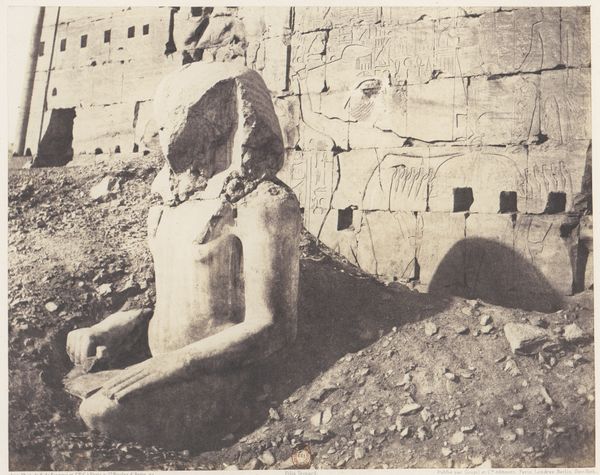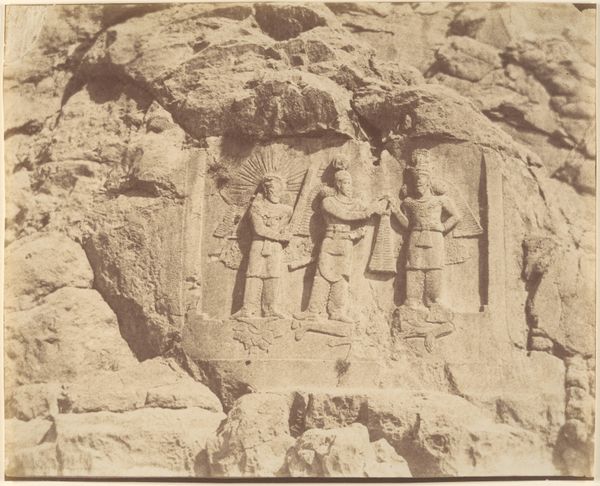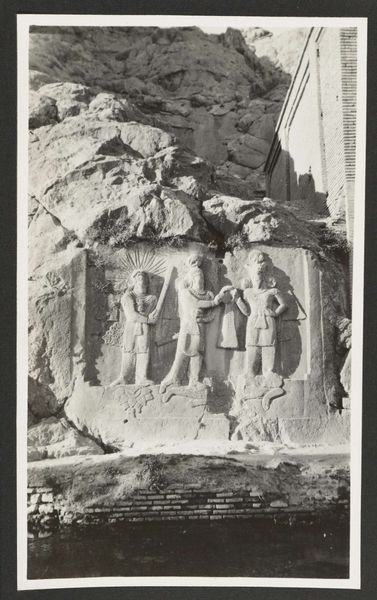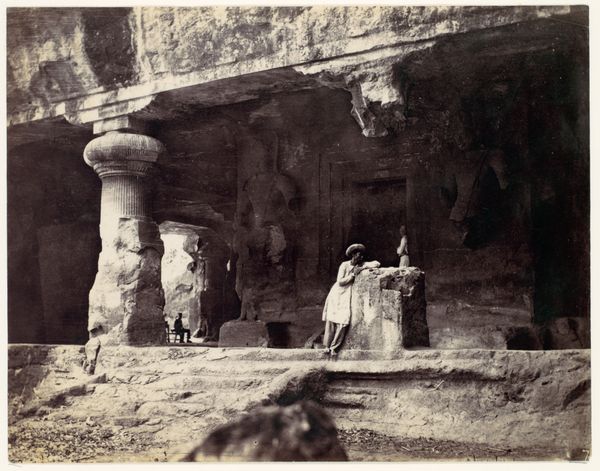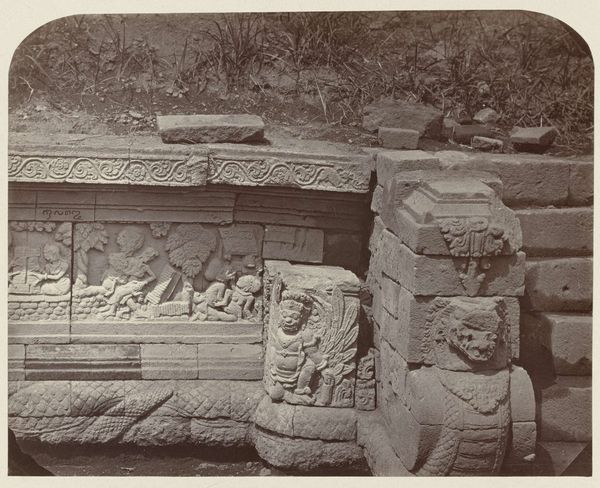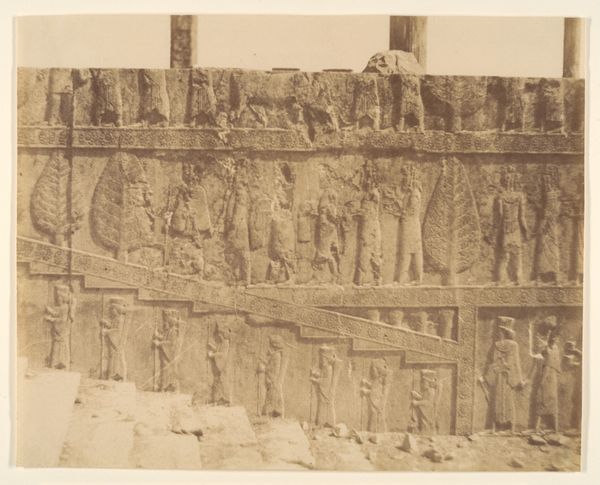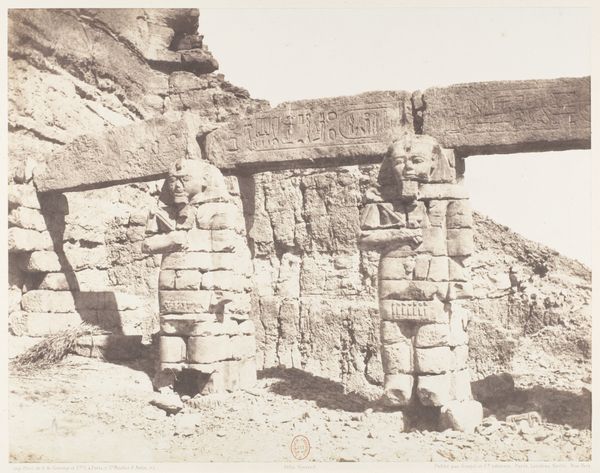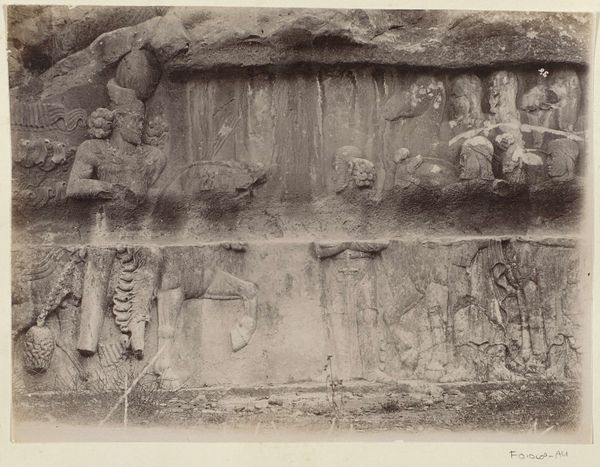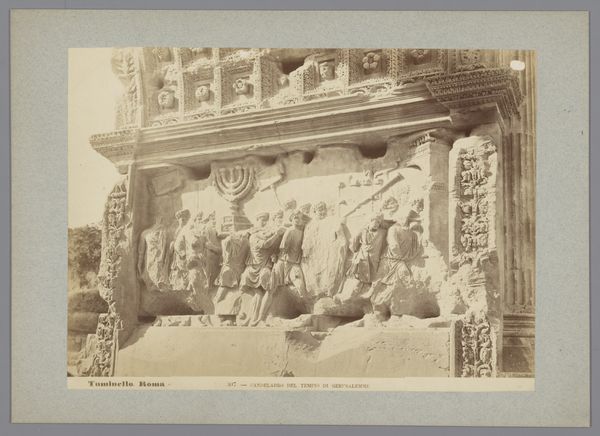
Bas-reliëf van de Romeinsche Keizer Valerianus in een rots te Naks-i-Rustam, Perzië Possibly 1925
0:00
0:00
carving, print, relief, photography
#
carving
# print
#
sculpture
#
relief
#
landscape
#
figuration
#
photography
#
carved into stone
#
ancient-mediterranean
Dimensions: height 84 mm, width 144 mm, height 124 mm, width 184 mm
Copyright: Rijks Museum: Open Domain
A.G.A. van Eelde made this photograph of a bas-relief of the Roman Emperor Valerianus in a rock at Naks-i-Rustam, Persia. The photograph captures a carving in stone. This looks like a process of both addition and subtraction, as the artist must have worked both to build up the figures, and to scrape away the stone around them. I like the textural contrast between the smoother, more defined area containing the figures, and the rougher, less defined area of rock face surrounding it. The figures have a classical, almost ideal quality. The surrounding rock face looks almost abstract by comparison. There's a really interesting mark on the Emperor's horse where the stone seems to have been chipped away; it draws the eye. It is almost like the stone itself is decaying or eroding, as if the image is gradually returning to the earth. It reminds me of some of the photographic work of someone like Tacita Dean, interested in time, decay and the process of entropy.
Comments
No comments
Be the first to comment and join the conversation on the ultimate creative platform.



